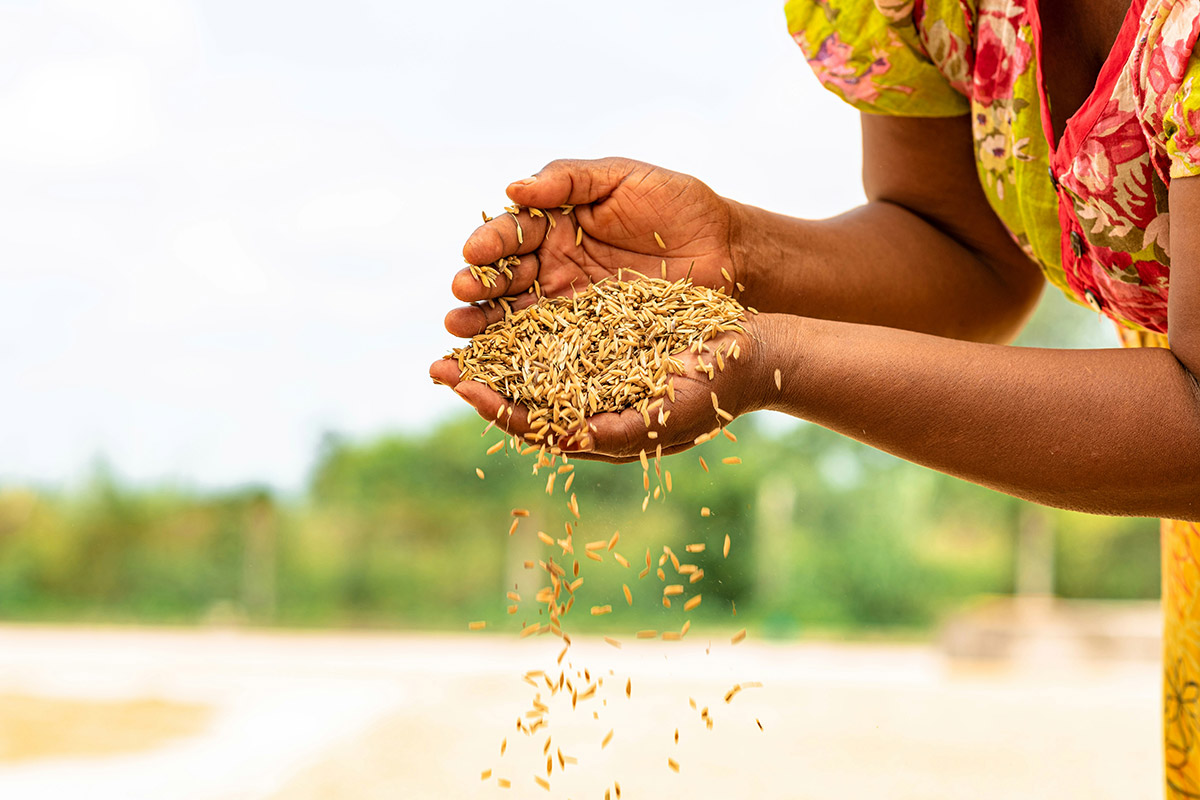
Photo: Ali Mkumbwa on Unsplash

Photo: Ali Mkumbwa on Unsplash
Across Uganda, the impacts of climate change are threatening food security and diminishing precious water resources. These climate stresses are exacerbating poverty and instability, particularly in communities where livelihoods depend heavily on agriculture (almost 70 percent of the country’s workforce is employed in the sector).
In response, local innovators are pioneering adaptation solutions for farmers in rural and urban settings.
Supported by the UNDP-Adaptation Fund Climate Innovation Accelerator, Moyo District Farmers’ Association and Sample Uganda are demonstrating effective, scalable models for enhancing food security and economic stability.
Here are their stories.
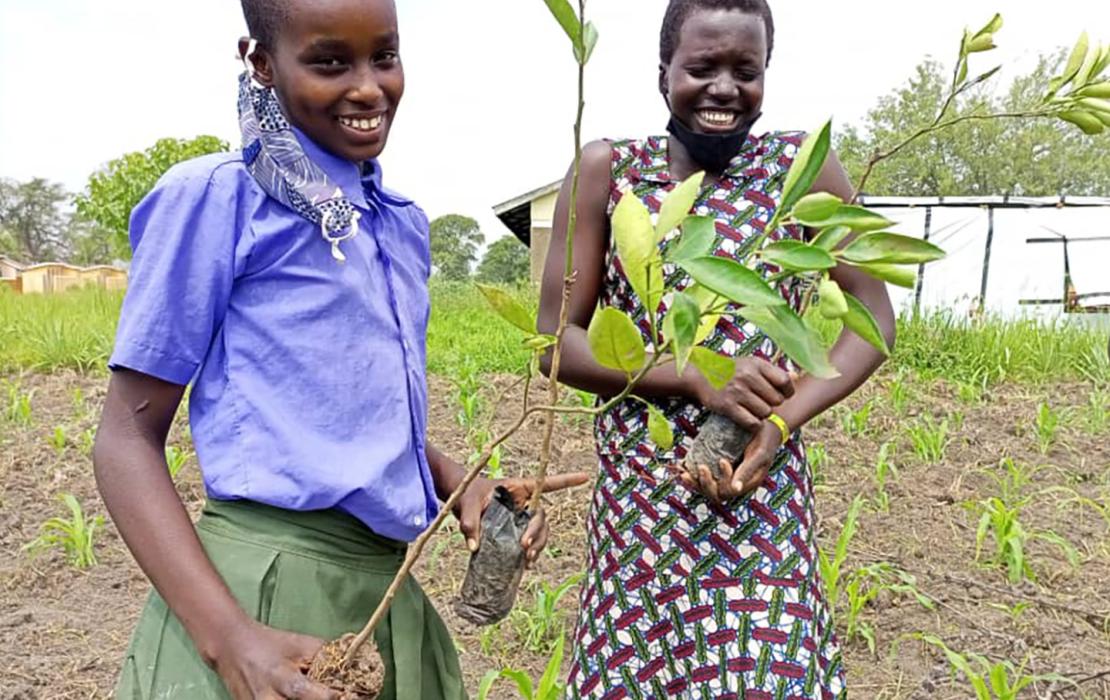
Photo: Moyo District Farmers’ Association
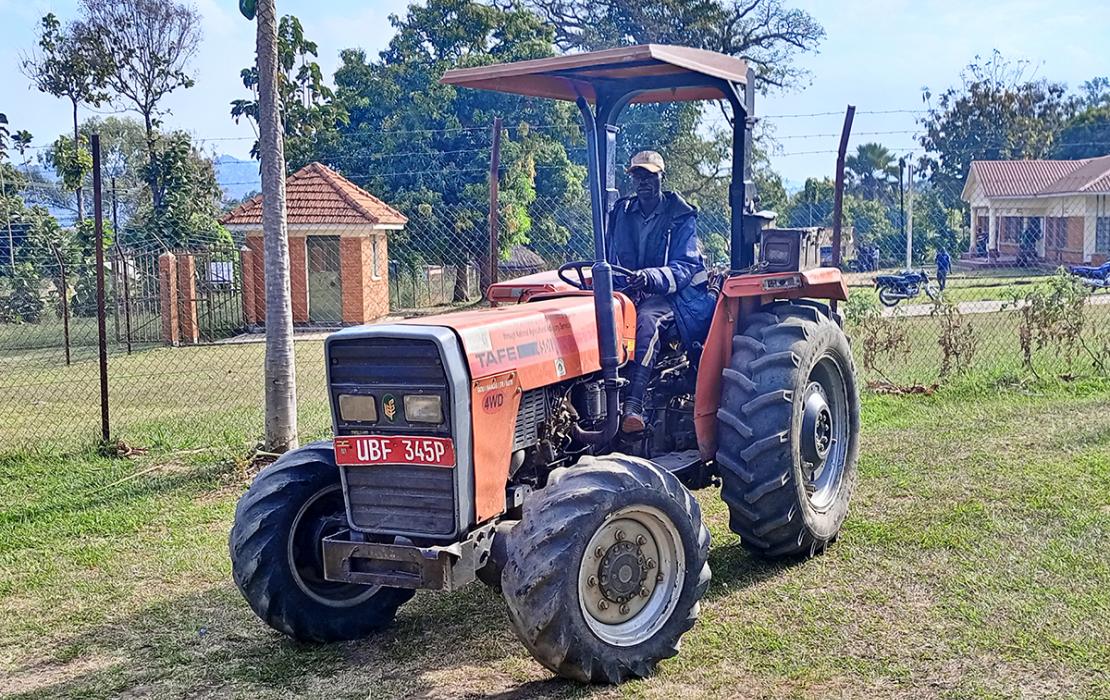
Photo: Moyo District Farmers’ Association
Mobile app offers tailored climate-smart solutions for smallholder farmers
In Arapi village, in Uganda’s Moyo district, Veronica Matio shows off her beans. They are thriving in the shade of the trees dotted around the planted rows. “The beans you see under the shade seem to be performing better because of the buildup of nutrients from decomposing leaves,” she says.
Moyo District Farmers’ Association (MDFA) has been encouraging its community of agricultural extension workers and farmers like Matio to build resilience to tough and unpredictable weather conditions by naturally restoring and conserving their land. This nature-based approach is known as farmer managed natural regeneration. “When a farmer adopts this approach, you grow crops with the trees,” explains Justine Mawadri, a climate-smart expert at MDFA.
Mawadri says farmer managed natural regeneration – a quick, affordable and easy-to-replicate way to restore and manage trees and shrubs – has been shown to alleviate poverty among subsistence farmers in developing countries.
This is critical in Uganda, where natural resources and farm productivity have declined due to bush burning, poor water management and the cutting of trees for firewood, construction materials and to make space for agricultural land.
MDFA reports that in the Moyo and Obongi districts where the organization works, these problems have exacerbated food insecurity, conflicts and gender-based violence. Many of the communities they work with also host refugees who require additional support.
Supported by a grant from the UNDP-Adaptation Fund Climate Innovation Accelerator (AFCIA), MDFA has trained more than 20 extension officers to use their Climate Agri Solutions mobile app.
“You can assess a farmer for his or her climate-related risks [using the app],” says Mawadri. If a farmer has a drought problem, he explains, the app provides a list of climate-related questions. It then uses the answers to those questions to “calculate” the best practices for that farmer.
MDFA trained extension officers in using the app to access guidance on farmer managed natural regeneration and other climate-smart agricultural practices such as irrigation with plastic water bottles or mulching, and planting drought-tolerant crops. The officers are now able to pass on the information assisted to the farmers they serve.
In one instance, a group of farmers who were only growing tomatoes in the rainy season were shown by extension workers how to become less dependent on the seasons, for example through soil and water conservation. That year, the farmers were able to produce tomatoes in the off-season for the first time. “From the revenue they generated, they were able to buy their own seeds and expand their production area.”
“We have [also] tried to incorporate economic models into it. So that as much as farmers will be conserving the environment, they will also be earning money,” says Emmanual Iranya, an MDFA coordinator. “The whole system is very rewarding to the farmers and it becomes sustainable.”
In another case, farmers began applying mulching in their garden and irrigating using the nearby stream. “They realized they were under-utilizing the resources available,” says Mawadri.
Farmer John Ambama says mulching with grass is helpful amid climate change. “It helps in the dry season to hold moisture. The mulch also suppresses weeds and makes the crops grow faster.”
There are over 60 climate-related logics within the app, which Mawadri hopes will be able to address the issues that all farmers face.
Mawadri says the farming community in general has responded very positively to the farmer managed natural regeneration approach. For him, the biggest success of the project lies in the way refugees and their host community started working together peacefully and in harmony. He says in many other cases, competition over natural resources can cause conflict, but this time they succeeded in promoting inclusion and cooperation.
At Veronica Matio’s tree-lined bean plantation, leaves are happily left to fall to the ground. “A farmer should not cut down all the trees on their farm,” she says. “Leave some to decompose into the soil, and you will benefit.”
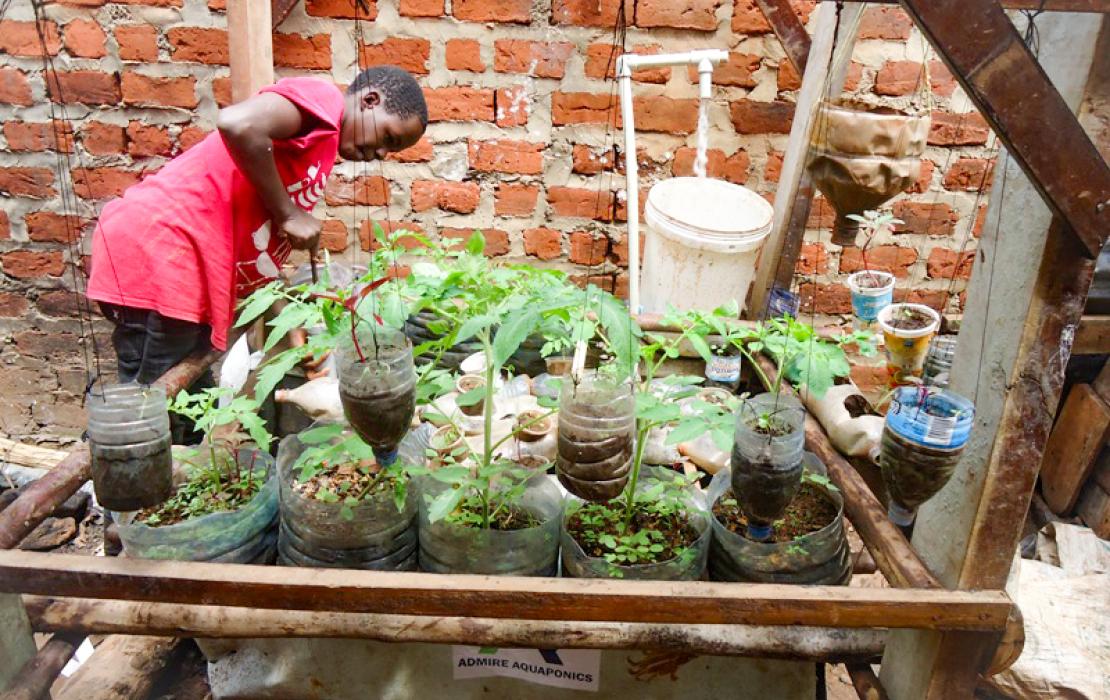
Photo: Sample Uganda
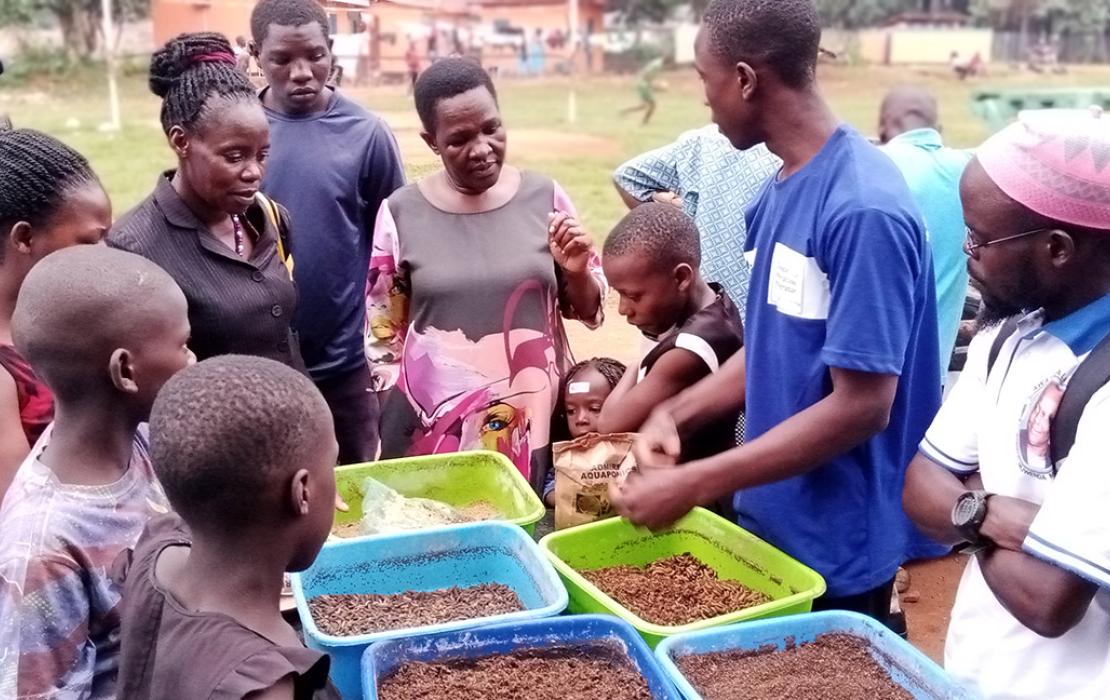
Photo: Sample Uganda
Plenty of fish in the tank and seeds in the water for Uganda’s city farmers
In Uganda’s cities, thousands of residents are turning any available small space into a fish farm, a vegetable garden, or both. They’re using ‘ADMIRE’ aquaponic kits, which fit snugly on apartment rooftops, in tiny backyards, and in the corner of any classroom, community centre or kitchen.
In 2017, a group of local fish farmers and entrepreneurs called Sample Uganda began the project to bring the technology to people living in Uganda’s urban neighbourhoods. The goal is to provide affordable, healthy food to communities and to create jobs, without putting further pressure on the environment.
Sample Uganda saw aquaponics as the ideal solution. Used to grow a variety of vegetables, fruits and fish, the method employs less water than traditional agriculture and does not require the use of pesticides or herbicides.
The group says their compact system is ideal in densely populated urban areas where space is limited and where produce transported from rural areas is often no longer fresh.
According to the group, use of the systems by over 23,000 households has cut water and nutrient waste, as well as carbon emissions associated with traditional farming. The approach has also reduced the need for transportation and packaging.
Sample Uganda presented the benefits of the kits at market events, churches and schools, demonstrating how people could use it to start their own businesses selling the produce to their communities.
A lease-to-own option, based on the size of the kit and the customer’s ability to pay, makes the kit accessible and affordable to people from all walks of life. By becoming owners of the kit at the end of a lease term, users gain self-sufficiency and empowerment in producing their own food sustainably.
“It enables them to acquire income-generating assets without having to bear the high upfront costs, which can be a significant barrier to entry,” says the Sample Uganda team. “This model could be replicated in other industries, especially in developing countries, to address the challenge of access to capital.”
To help people start their own businesses, Sample Uganda workshopped business models, investment options and marketing strategies with the leaders of savings and credit cooperatives. They covered skills like writing business and marketing plans, identifying funding sources, managing financial risks and estimating production costs.
The workshop equipped leaders with the skills to incorporate micro aquaponics into their own business models, and to provide sustainable economic opportunities to their members.
Combining aquaculture and hydroponics, the final design can produce fish and vegetables in the same limited space, producing a closed-loop system that minimizes water usage and maximizes plant growth. The model is ideal to replicate anywhere where water scarcity is a challenge.
***
About the AFCIA programme
These stories have been co-created with support from the Climate and Development Knowledge Network (CDKN) and UNDP in the framework of the UNDP-managed Adaptation Fund Climate Innovation Accelerator programme (UNDP-AFCIA).
Supported by financial contributions from the Adaptation Fund and the European Union, the UNDP-AFCIA programme has awarded 44 micro and small grants to locally led organizations across 33 countries worldwide, accelerating their innovative solutions to build resilience in the most vulnerable communities.
UNDP-AFCIA is one of two featured programmes under the Adaptation Innovation Marketplace (AIM), a multi-stakeholder strategic platform that promotes scaled-up adaptation at the local level.